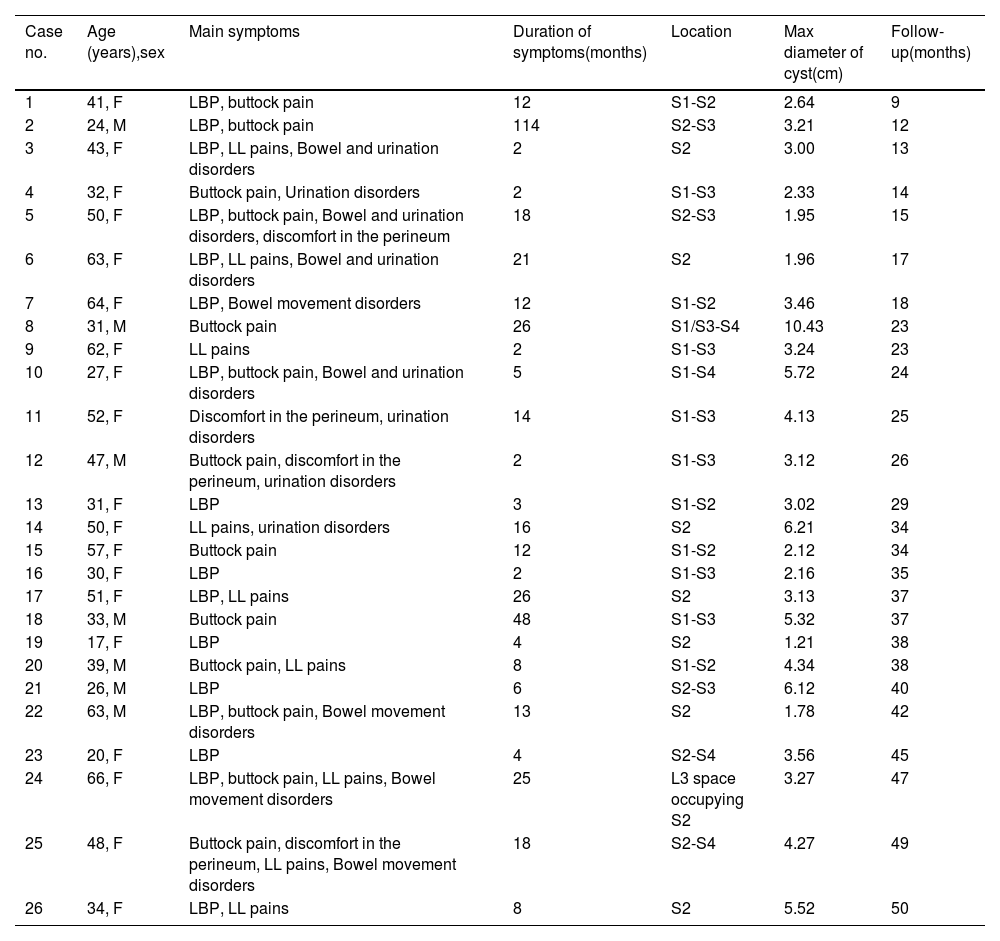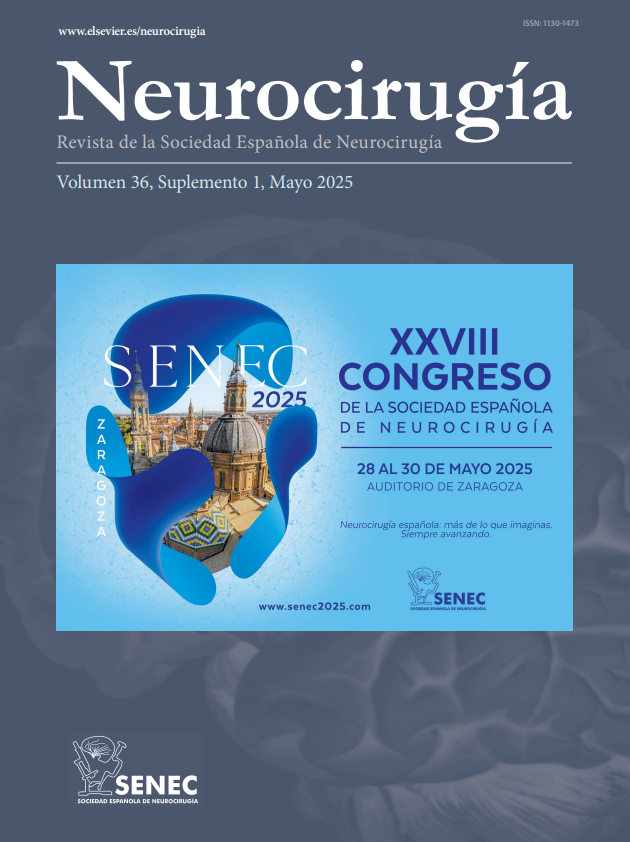Tarlov cysts (TCs) are commonly found sacral perineural cysts. Symptomatic TCs are rare, and there is no consensus on optimal treatment. The pathophysiological mechanism of TCs remains unclear. The aim of this study is to investigate the effects of surgical intervention on symptomatic TCs and the development mechanism of TCs.
MethodsWe retrospectively analyzed the clinical data of 26 patients with symptomatic TCs who underwent surgical treatment in our department between November 2016 and June 2019. Intraoperative manometry was performed in 10 of these patients. Pain relief and clinical outcomes were evaluated statistically.
ResultsPostoperative symptoms improved in 25 patients (96.2%), while one patient (3.8%) showed no improvement. No wound infections or new complications were observed. Patients were followed for 5–49 months (mean: 28.04±12.57 months). There were statistically significant decreases (p<0.05) in the M-JOA low-back pain scores from preoperative (26.32±1.75) to postoperative (14.92±5.95) values, as well as a significant improvement (p<0.05) in the NRS pain scores from preoperative (2.02±1.46) to postoperative (6.23±1.20). Preoperative intracapsular pressure ranged from 3.1 to 12.4mmHg across different positions. Postoperative sacral canal pressure ranged from 0.1 to 0.8mmHg in various positions.
ConclusionCyst excision and perineurium reconstruction under a microscope is an effective and safe method for treating sacral radicular cysts.
Los quistes de Tarlov (QT) son quistes perineurales sacros relativamente frecuentes. Los QT sintomáticos son raros y no existe consenso sobre el tratamiento óptimo. El mecanismo fisiopatológico de los QT sigue siendo incierto. El objetivo de este estudio es investigar los efectos de la intervención quirúrgica en los QT sintomáticos y el mecanismo de desarrollo de los QT.
MétodosAnalizamos de forma retrospectiva los datos de 26 pacientes que presentaban quistes de Tarlov intervenidos quirúrgicamente entre noviembre de 2016 y junio de 2019. Se realizó manometría intraoperatoria en 10 de estos pacientes. Se evaluaron estadísticamente el alivio del dolor y los resultados clínicos.
ResultadosLos síntomas postoperatorios mejoraron en 25 pacientes (96,2%), mientras que un paciente (3,8%) no mostró mejoría. No se observaron infecciones en la herida ni nuevas complicaciones. Los pacientes fueron seguidos durante 5-49meses (media: 28,04±12,57meses). Se observaron disminuciones estadísticamente significativas (p<0,05) en las puntuaciones de dolor lumbar en el M-JOA desde los valores preoperatorios (26,32±1,75) hasta los postoperatorios (14,92±5,95), así como una mejora significativa (p<0,05) en las puntuaciones de dolor en la NRS desde los valores preoperatorios (2,02±1,46) hasta los postoperatorios (6,23±1,20). La presión intracapsular preoperatoria varió de 3,1 a 12,4mmHg en diferentes posiciones. La presión postoperatoria del canal sacro varió de 0,1 a 0,8mmHg en varias posiciones.
ConclusiónLa excisión del quiste y la reconstrucción del perineurio bajo microscopio es un método eficaz y seguro para tratar los quistes radiculares sacros.
Article

If it is the first time you have accessed you can obtain your credentials by contacting Elsevier Spain in suscripciones@elsevier.com or by calling our Customer Service at902 88 87 40 if you are calling from Spain or at +34 932 418 800 (from 9 to 18h., GMT + 1) if you are calling outside of Spain.
If you already have your login data, please click here .
If you have forgotten your password you can you can recover it by clicking here and selecting the option ¿I have forgotten my password¿.














